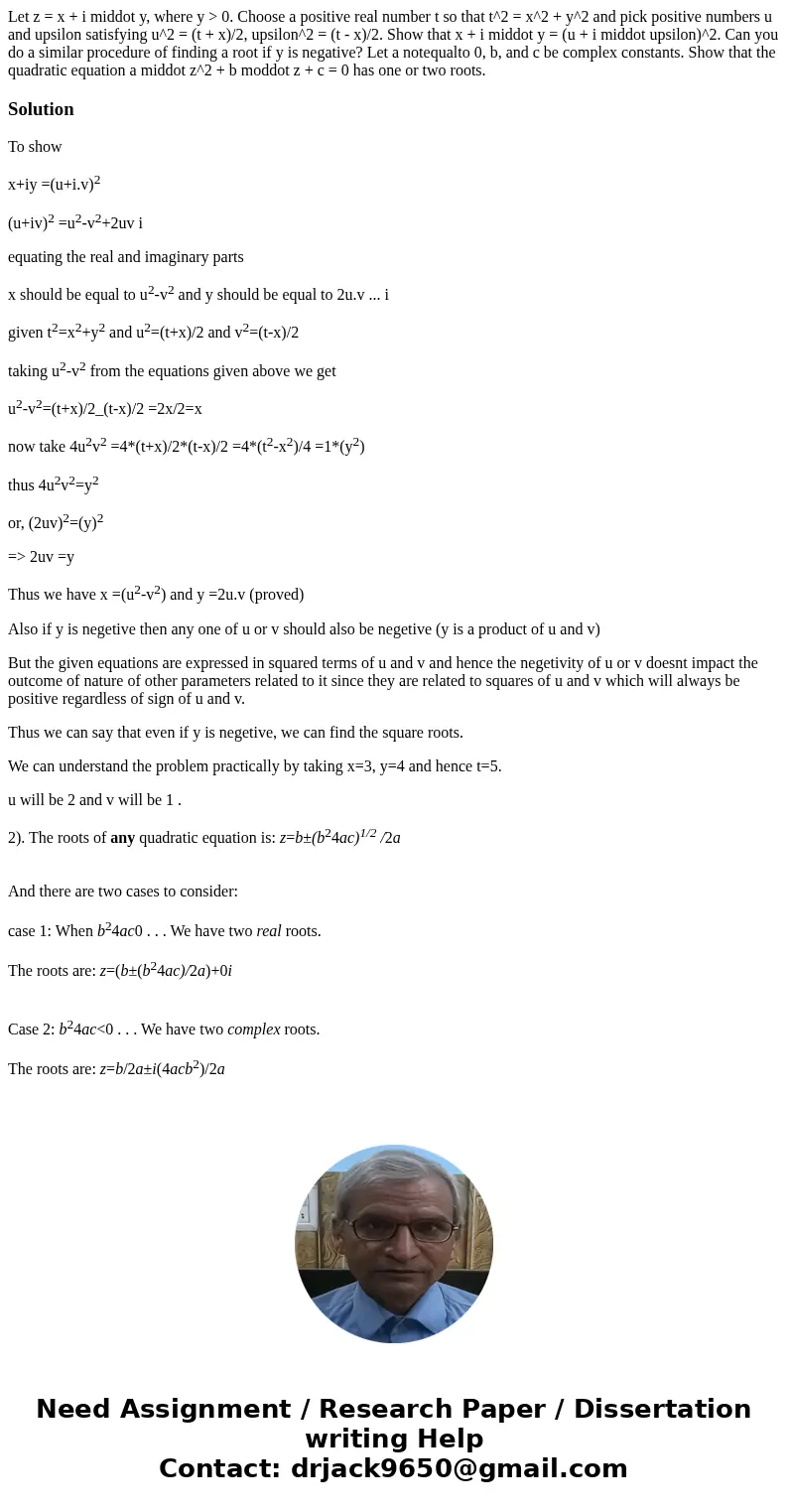Let z x i middot y where y 0 Choose a positive real numbe
Solution
To show
x+iy =(u+i.v)2
(u+iv)2 =u2-v2+2uv i
equating the real and imaginary parts
x should be equal to u2-v2 and y should be equal to 2u.v ... i
given t2=x2+y2 and u2=(t+x)/2 and v2=(t-x)/2
taking u2-v2 from the equations given above we get
u2-v2=(t+x)/2_(t-x)/2 =2x/2=x
now take 4u2v2 =4*(t+x)/2*(t-x)/2 =4*(t2-x2)/4 =1*(y2)
thus 4u2v2=y2
or, (2uv)2=(y)2
=> 2uv =y
Thus we have x =(u2-v2) and y =2u.v (proved)
Also if y is negetive then any one of u or v should also be negetive (y is a product of u and v)
But the given equations are expressed in squared terms of u and v and hence the negetivity of u or v doesnt impact the outcome of nature of other parameters related to it since they are related to squares of u and v which will always be positive regardless of sign of u and v.
Thus we can say that even if y is negetive, we can find the square roots.
We can understand the problem practically by taking x=3, y=4 and hence t=5.
u will be 2 and v will be 1 .
2). The roots of any quadratic equation is: z=b±(b24ac)1/2 /2a
And there are two cases to consider:
case 1: When b24ac0 . . . We have two real roots.
The roots are: z=(b±(b24ac)/2a)+0i
Case 2: b24ac<0 . . . We have two complex roots.
The roots are: z=b/2a±i(4acb2)/2a

 Homework Sourse
Homework Sourse